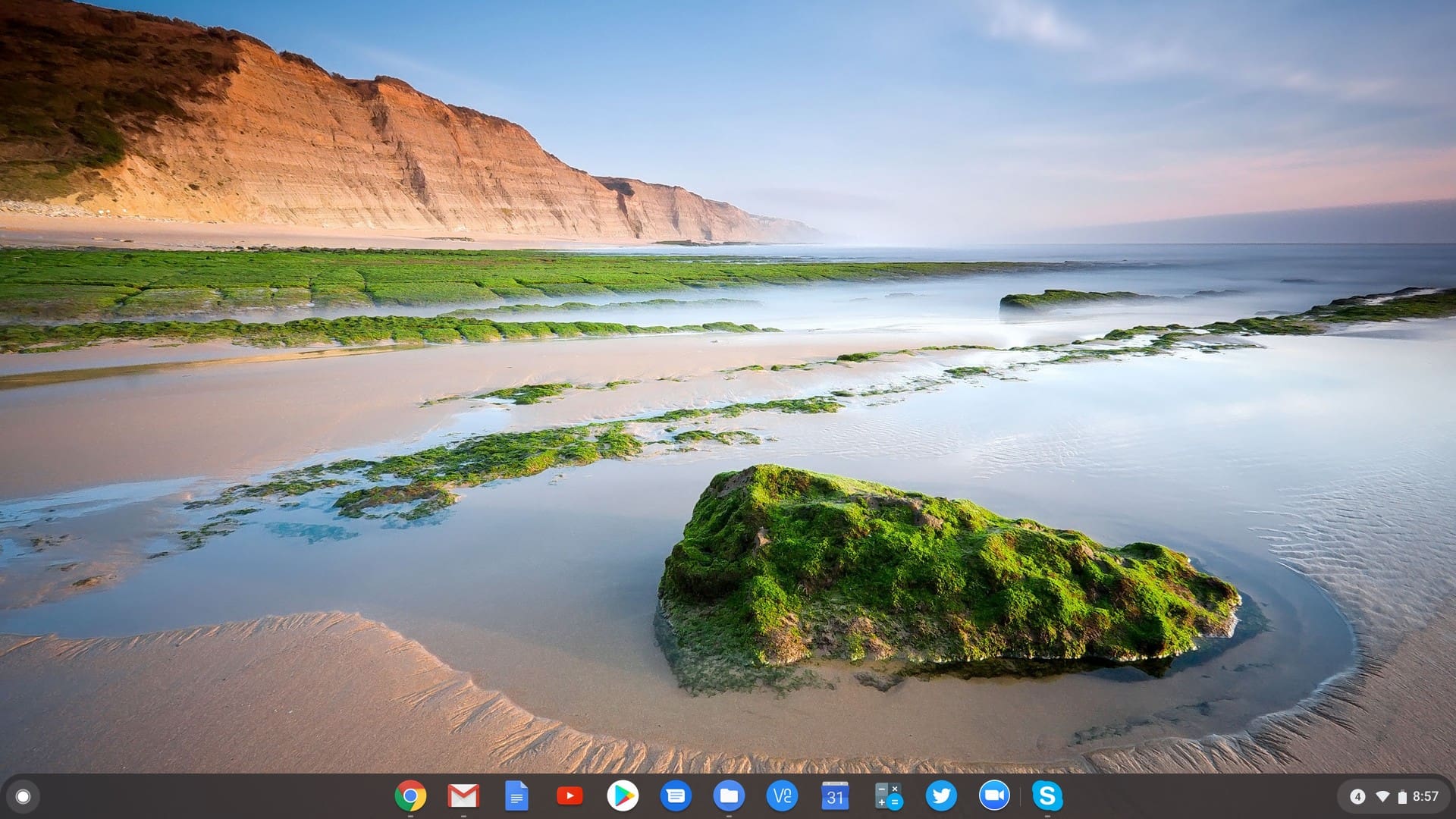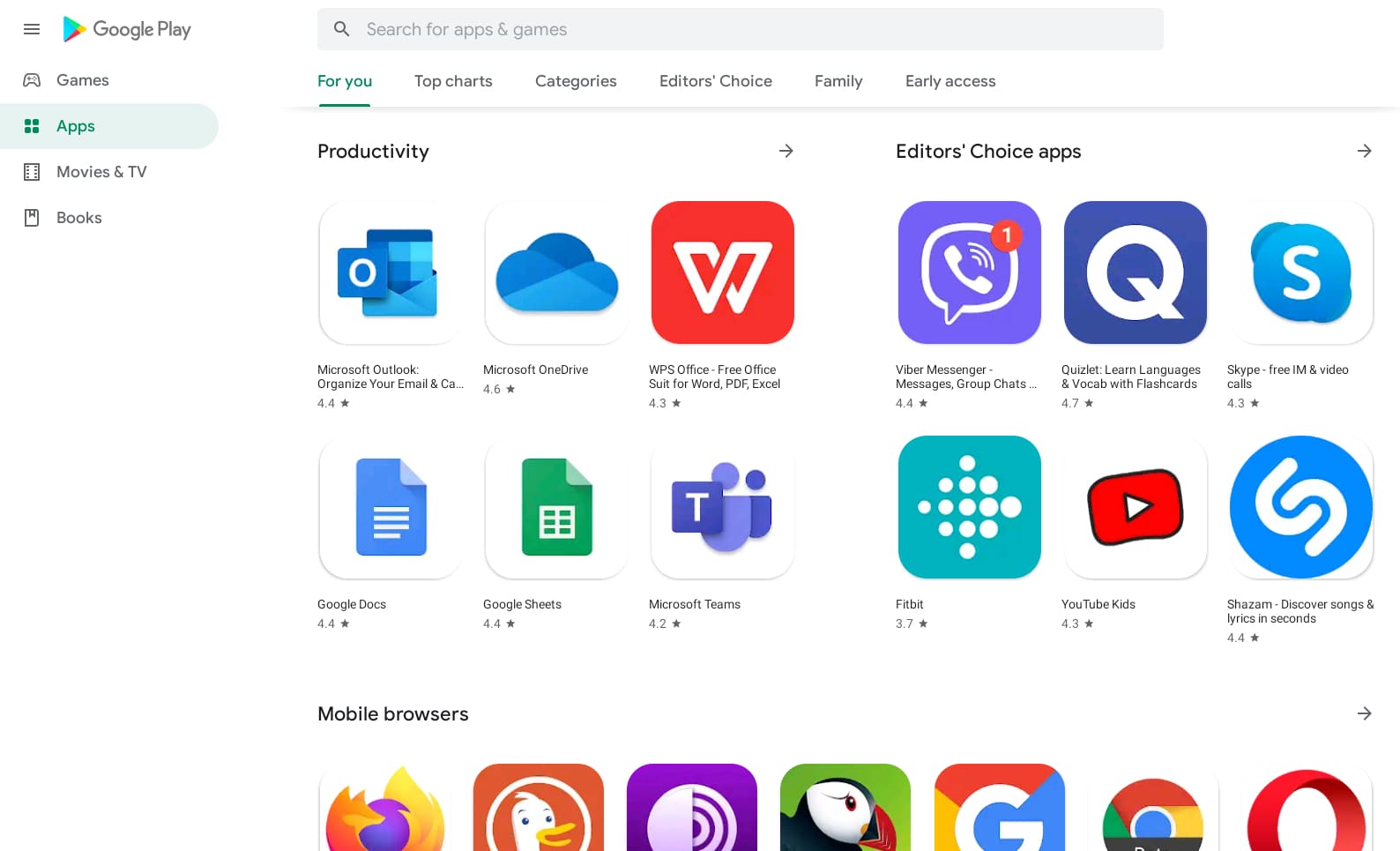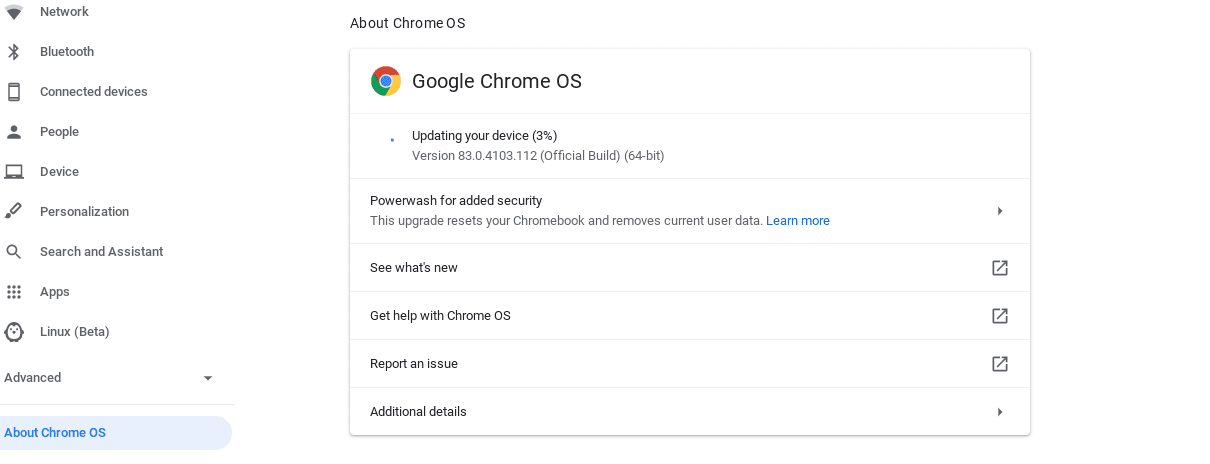With that being said, we have another competitor in the playing field, which seems to be identical to its counterpart browser, Chrome. We’re talking about Chromium- an open-source browser that Google undertook as a project—providing the necessary source code for Chrome and several other browsers.
Chrome OS vs. Chromium OS
This article aims to evaluate the critical differences between the two that you should know if you’re confused and looking to download either. Let’s get right to it then.
Features
Chrome OS, that’s famous for powering Chromebooks, is essentially jam-packed with features. This is one of the reasons why the operating system and the browser gained immense popularity over the years and has topped global rankings. Google is the entity behind the maintenance and development of Chrome and has provided it the reputation it has today.

Chromium OS Welcome Screen
However, there is, indeed, one aspect where Chrome bows before Chromium- the open-source, free web browser that has been developed and maintained by the men in Chromium Projects. The fact that it’s open-source pays off heavily since everyone can modify, change, and customize the source code that makes up the browser. This offers the average user limitless possibilities, and anyone could utilize this Chromium feature as they please. However, to contribute to the actual code, you’ll have to be a trustworthy member of Chromium Projects’ dev community.
Nevertheless, let’s get down to where Chrome excels. First off, there isn’t the feature of crash and bug reporting in Chromium. If you’re experiencing frequent crashes or a nitwit bug, Chrome addresses that for you to Google instantly and mostly gets back to you promptly. For a similar strategy, you’ll have to adapt traditional approaches to fix bugs on Chromium, because there’s no crash reporter on this open-source browser as of yet.

Chrome OS desktop
Another feature, although of trivial importance, that Chromium comprises a lackluster of, is detailed user-metrics. This provides Google with the data they need to make decisions to improve your experience. Moreover, these user-metrics monitor your Chrome usage and determine which parts are utilized the most of the browser, in turn, providing feedback to Google. It’s been perceived that Chromium does not have this feature.
Binary Packages
Furthermore, one of the significant drawbacks of using Chromium that becomes the biggest drawback for most users is the inability to support the Adobe Flash Player. This is because Flash isn’t open-source, thereby Chromium cannot natively support it. However, outdated that may seem, but numerous sites today cannot function without Flash, and require it first and foremost. Chrome, on the other hand, rocks the Flash Player like a breeze.

Google Play Store
There is still more to the list that Chromium OS can’t include. Widevine CDM plugin (to support HTML5 EME), 3G Cellular support, DisplayLink Manager for video over USB, and Android (ARC++) container for running Android apps are only available in Chrome OS.
Anyhow, Chromium still measures up almost the same to Chrome, having quality traits that are enabled by default. These include prediction assistance, correcting mistyped URLs, a feature that prevents phishing, and a lot more.
Updates
Another critical difference between Chrome OS and Chromium is the regularity and methodology of updates. Google makes sure that Chrome OS is continuously updated to keep everything up to speed and provide a profound user experience. Even more so, the updates are done automatically and don’t require you to proceed with any mandatory installs or downloads. However, that’s certainly not the case with Chromium. Let us tell you why.

Update ChromeOS
It’s known that Chromium OS receives more frequent updates than Chrome. This might be a plus point, but that’s not all that concern updates on this open-source browser. The official Chromium Projects have cleared it beforehand that Chromium does not update automatically, and you’ll have to go through them manually.
Also, these updates are what technically termed as “bleeding edge,” meaning that there’s a high degree of uncertainty in the update build. The only improvisation here is to get in contact with third-party builds for your Chromium, but those won’t update all by themselves either.
Adding to the hassle, there’s a possibility that you can compile Chromium’s source code for the update, but then again, no one would like to delve in this bother every time an update is dropped. Compared to Chrome, where everything happens in the background, Chromium truly falls short in this regard.
Restrictions
You’re probably familiar with browser extensions that work as add-ons in Chrome, and subsequently now, Chromium as well. Unfortunately, you’re restricted with extensions that are registered with the Chrome Web Store, and cannot use any extensions from the outside. On Chromium, there are no limitations on browser extensions, and any of them you like can be added to your open-source browser.
Another advantage that we would like to state here is that Chromium allows Linux distributions, being the code-centric browser that it is. These distributions require open-source software, and this is where Chromium stands out.
License Support
When it comes to license support, take it from us when we tell you that Chrome outclasses Chromium significantly. Firstly, there are specific media codecs that allow streaming media content in a browser. Chrome has licensed codecs for AAC, H.264, and MP3- all of which are proprietary media formats. This feature comes particularly in handy when websites use the HTML5 format of video to stream H.264 videos.
Without all the codecs, your browser, Chromium, in particular, won’t be able to play media by any means. Of course, you can always download the codecs manually, but that doesn’t amount to the same user experience.
Chromium, on the other hand, only offers support for the free, basic codecs such as Opus, Theora, Vorbis, VP8, VP9, and WAV. These are available on Chrome as well. Besides, we would also like to add that Chromium is restricted from streaming DRM components that play copyrighted content. This includes Netflix, and Youtube, among others. Hence, you’re better off with Chrome if you’re an avid streamer and like to watch movies or TV shows on your computer.
Security
Another comparison worthy enough to be drawn out is for those who feel a bit insecure whenever they’re on the internet surfing around. It’s a commonplace that Chrome tracks and keeps a record of your browsing patterns, history, cookies, and other data. Add just a little spice of conspiracy theories, and a person who’s relatively new to the internet will firmly believe that Google’s out to steal people’s data with this information. That’s not common, of course, we know, but it’s something worth mentioning.
Chromium, on the other hand, is praised in this matter that it does not track user history and behavior on the internet, and potentially report to Google. There’s no record of your browsing history whatsoever, and Chromium likes to keep things silent. It’s almost as if the browser cares for your secrecy, thereby proclaiming an auto-incognito approach. Amidst this, we also have security patches that are brought to Chrome consistently and automatically too. With Chromium OS featuring manual updates, you’re very likely to miss an important security patch or twelve, putting you at risk for malware.
Additionally, there exists a sandbox security mode in Chrome that prevents attackers from harming the system. What it does is run applications in a restricted environment, negating potential threats and risks. On Chromium, this security sandbox is disabled by default but comes enabled on Chrome OS initially. You can always turn the sandbox mode on while using Chromium, but we deemed this point noteworthy to be on this article.
Conclusion
If you’re not a superuser, observing Chrome’s defects is considerably hard. For the average user, Google Chrome will set you back nothing and provide a fantastic browsing experience. This is why it’s one of the most loved browsers globally. However, to speak for the other guy, Chromium’s drawbacks are significant in some cases, but it’s still the same thing more or less.
Therefore, Chromium, unlike Chrome, isn’t just another typical OS for you. It’s suited more strongly for advanced users and people who’d like to tinker around with an open-source project. Nevertheless, Chromium OS’s latest version is still probably less stable than the earliest versions of Chrome. It’s not very easy to use as well compared to the latter, and you’re going to like Chrome OS far better than Chromium OS if your needs aren’t unusually distinct.
